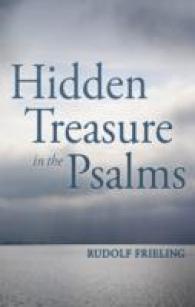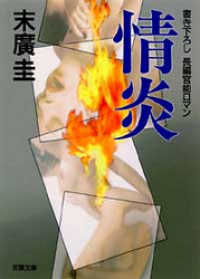- ホーム
- > 洋書
- > 英文書
- > Philosophy
基本説明
New in paperback. Hardcover was published in 2011.
Full Description
This volume examines the causes and purposes of 'post-conflict' violence.
The end of a war is generally expected to be followed by an end to collective violence, as the term 'post-conflict' that came into general usage in the 1990s signifies. In reality, however, various forms of deadly violence continue, and sometimes even increase after the big guns have been silenced and a peace agreement signed. Explanations for this and other kinds of violence fall roughly into two broad categories - those that stress the legacies of the war and those that focus on the conditions of the peace. There are significant gaps in the literature, most importantly arising from the common premise that there is one, predominant type of post-war situation. This 'post-war state' is often endowed with certain generic features that predispose it towards violence, such as a weak state, criminal elements generated by the war-time economy, demobilized but not demilitarized or reintegrated ex-combatants, impunity and rapid liberalization.
The premise of this volume differs. It argues that features which constrain or encourage violence stack up in ways to create distinct and different types of post-war environments. Critical factors that shape the post-war environment in this respect lie in the war-to-peace transition itself, above all the outcome of the war in terms of military and political power and its relationship to social hierarchies of power, normative understandings of the post-war order, and the international context.
This book will of much interest to students of war and conflict studies, peacebuilding and IR/Security Studies in general.
Contents
1. The Peace in Between Astri Suhrke Echoes from History 2. Violence and the Post-Conflict State in Historical Perspective: Spain 1936-1948 Michael Richards 3. Reconstruction and Violence Post-Bellum American South 1865-77 Michael Beaton Europe and the Middle East 4. Post-War Violence in Bosnia Mats Berdal, Gemma Collantes-Celador and Merima Zupcevic Buzadzic 5. Revenge and Reprisal in Kosovo Michael J. Boyle 6. Political Violence in Post-Civil War Lebanon Are Knudsen and Nasser Yassin 7. From Regime Change to Civil War: Violence in post-invasion Iraq Toby Dodge Asia 8. Armed Politics in Afghanistan Antonio Giustozzi 9. Warlordism: Three Biographies from Southeastern Afghanistan Kristian Berg Harpviken 10. Violence in Post-War Cambodia Sorpong Peu 11. Conflict and Violence in Post-Independence in East Timor Dionisio Babo-Soares Africa 12. Sexual Violence: The Case of Eastern Congo Ingrid Samset 13. The Political Economies of Violence in Post-war Liberia Torunn Wimpelmann Chaudhary 14. Violence, Denial and Fear in Post-Genocide Rwanda Trine Eide Latin America 15. The Multiple Forms of Violence in Post-War Guatemala John-Andrew McNeish and Oscar López Rivera Conclusions 16. Reflections on Post-War Violence and Peacebuilding Mats Berdal








